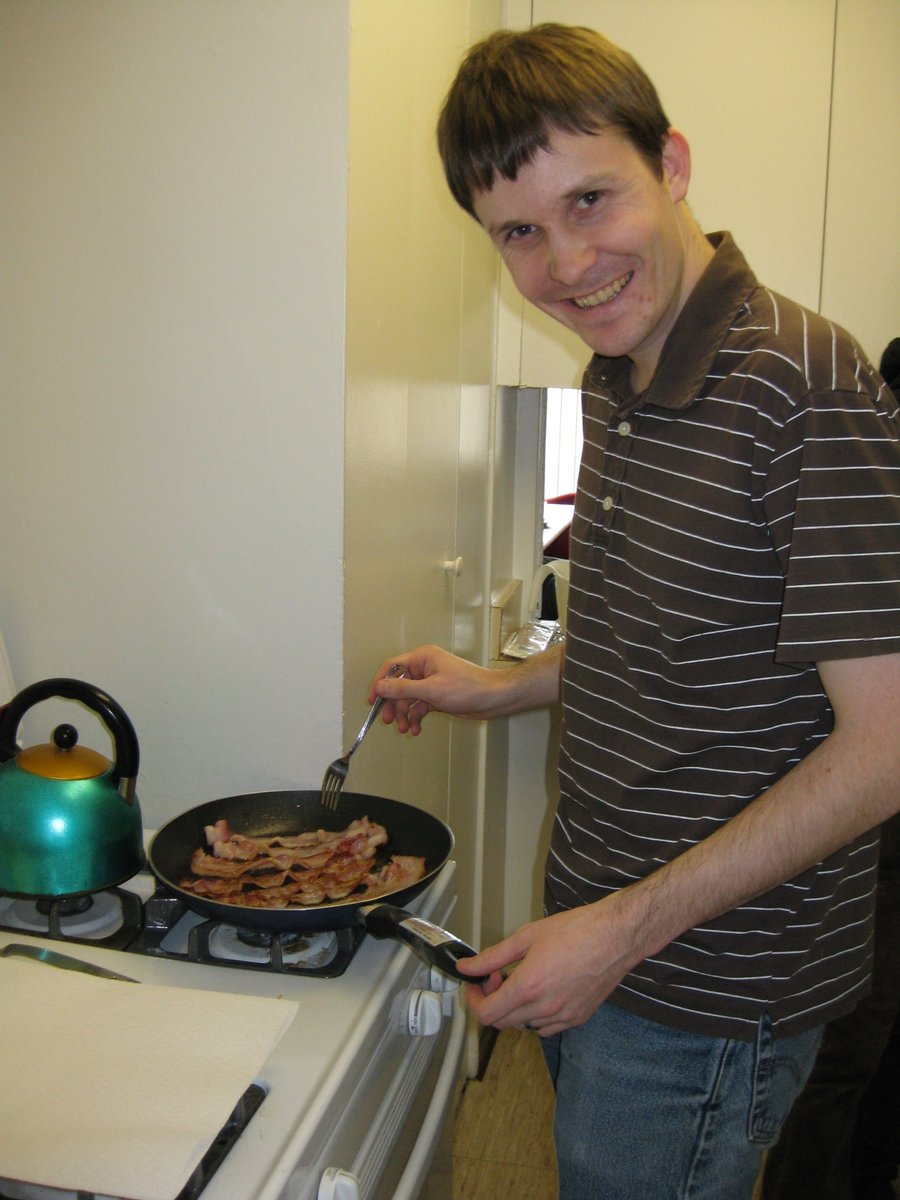
In 2007, my brother @startupandrew called to ask if I wanted to start a company with him. He needed a co-founder. I wanted to say yes but I didn't have a lot of savings and his startup ideas seemed kind of half-baked.
His first idea was a Fiverr-like website to match customers to businesses offering online services. He quickly gave up on that idea and started working on a secure mobile payments app. It was years ahead of its time but way too ambitious for founders with no banking connections.
By 2009, he was working on a lost-and-found service called SendMeHome. You'd buy stickers from SendMeHome with unique identifiers on them, then if your stuff got lost the finder would go to SendMeHome.com and contact you.
When this didn't get traction Andrew and his co-founder @JamesTamplin added a "story mode" where items could be passed from one person to another, with a post on the site for each person, a la wheresgeorge.com. They hoped an object would get to a celebrity like Bill Gates.
Here's me in grad school in 2009 making bacon in a SendMeHome frying pan. After I used it I was supposed to post about the experience and then pass it to someone else. Shockingly this company also failed to get traction! 

Later in 2009, Andrew and James started working on a new idea: a service to add a Facebook-style chat box at the bottom of any site. I was skeptical. But in 2010, I hosted a discussion on my blog using the service, called Envolve. timothyblee.com/2010/08/10/env…
In 2010 someone firedbombed Andrew's car outside his and James's apartment in Palo Alto. Money was so tight they moved out and lived with our Aunt in the East Bay. When I visited him in January 2011, Andrew and I both slept her spare room. Andrew and James both seemed exhausted.
On June 27, 2011, Andrew started "International Bring Your Pineapple to Work Day" as a company holiday. A decade later, June 27 is recognized around the world as Pineapple Day. startupandrew.com/posts/how-i-st… 

Envolve was not a total failure. It had some customers. But it wasn't growing quickly enough to cover their living expenses. They found it hard to scale because customers were constantly asking for custom modifications to integrate the chat with their own sites' login facilities.
So in late 2011, they pivoted again! Building Envolve taught Andrew a lot about how to build scalable real-time services. He used that knowledge to create a real-time database product called Firebase. I wrote about it in April 2012. forbes.com/sites/timothyl… 

Then everything started working. They got into Y Combinator in the summer of 2011, providing enough money to pay themselves a salary and hire a couple of employees. Here's Andrew (left) with two early employees in April 2012. 

Firebase raised $1.1 million in 2012 and $5.6 million in 2013. When I visited Andrew in early 2014 they had a big office in San Francisco with about two dozen employees and space for a bunch more. Later that year they sold the company to Google.
Firebase is now a major Google cloud computing brand with hundreds of employees working on it. The brand now includes the original database product as well as a suite of other tools for mobile and web development.
Andrew stayed at Google for three years, made sure the product was positioned for long-term success, and then quit in 2017. He wasn't cut out to be a middle manager.
After leaving Google, Andrew was exhausted. He played a lot of video games and did a lot of traveling. We toured Central Europe together in the Summer of 2018. 

Then in January 2020, he started a new company with several other Firebase veterans. I'm not allowed to tell you what they do but I've been using their product since October and it's great!
They are growing and looking to hire software engineers. You should apply! I am biased but I think my brother would be a fun guy to work for. It's a remote team so you can join them from anywhere in the US, no relocation needed. docs.google.com/document/d/19i…
Here Andrew's co-founder @JamesTamplin explains the origins of Bring Your Pineapple to Work Day.
• • •
Missing some Tweet in this thread? You can try to
force a refresh




